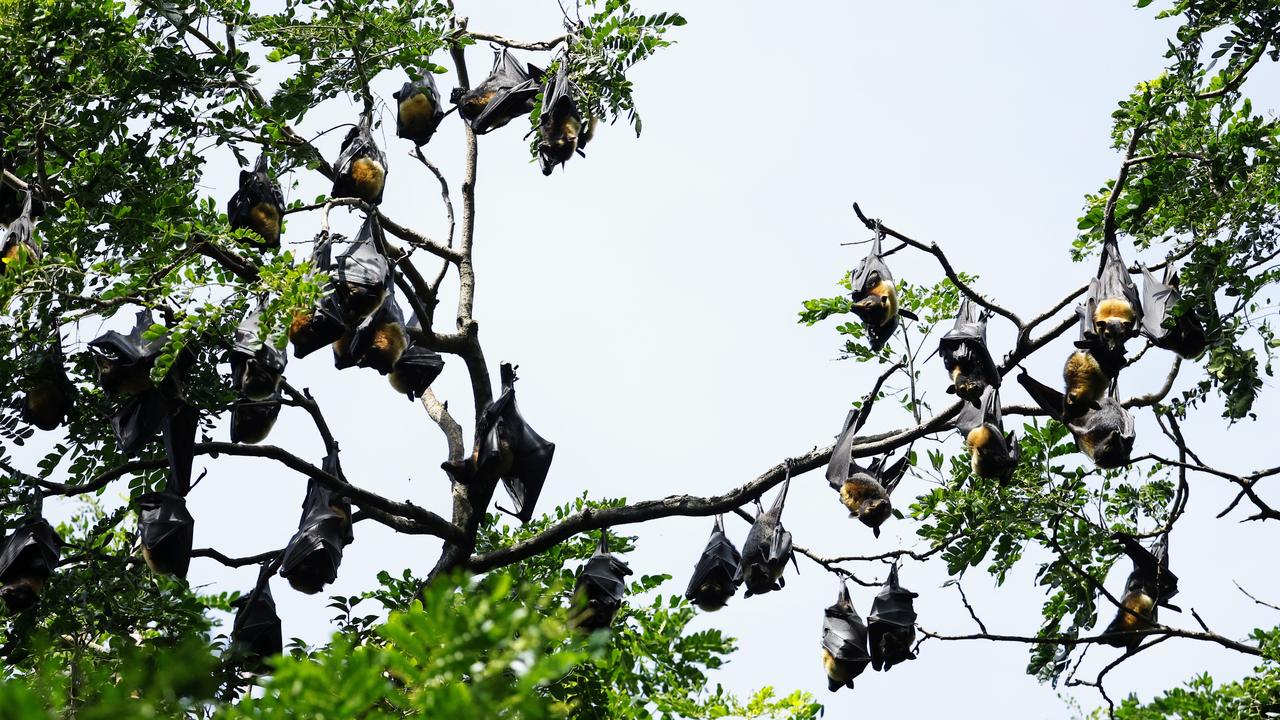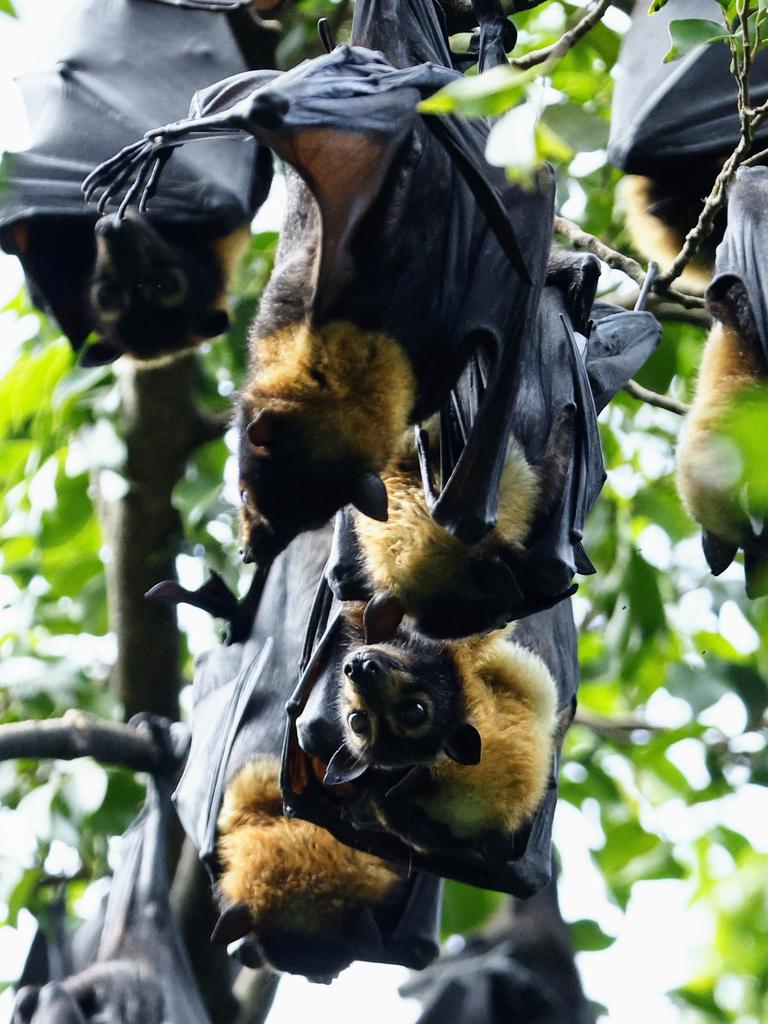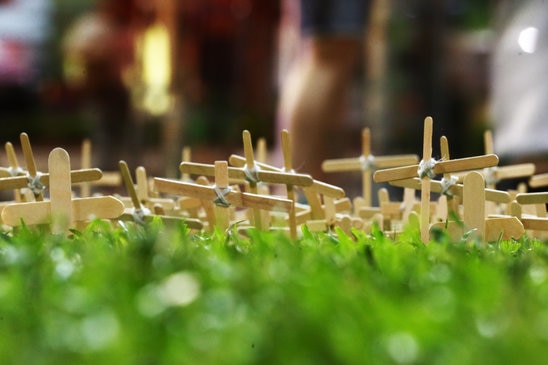Qld council to spend $140,000 removing flying foxes from park, enraging environmentalists
A Cairns council will spend thousands to remove more flying foxes from a park, but environmental advocates say the ramifications could be catastrophic

READING LEVEL: GREEN
A council in Far North Queensland intends to spend $140,000 to remove flying foxes* from a popular Cairns park, but environmental advocates* have said the council’s plans could be catastrophic*.
Cairns councillors will seek an application of $68,752 from the Department of Environment and Science, which the council will match, to fund the removal of flying foxes, a keystone species*, from Brinsmead Park Reserve.

Cairns Regional Council has previously used the deterrent management* technique to remove the animals, also known as fruit bats, from other Cairns establishments, including the library, and councillors are all but certain to endorse the method.
The report to be put before councillors stated growing bat numbers could cause an increase in “human/animal conflict*”. In effect, bats are disturbing residents by making noise and defecating* on nearby property.
A council spokesman said council was hoping to prevent a large maternity roost* at the park before birthing season in September.
But Cairns and Far North Environment Centre director Lucy Graham said dispersal* is unlikely to solve the problem.
“Dispersal is not best practice* for roost* management. If Cairns Regional Council keeps dispersing flying foxes it’ll have to do it continually as the bats will just take up residence elsewhere,” Ms Graham said.

According to the council’s own data, the Brinsmead flying fox population had already dropped from 7200 animals in November 2022 to 340 animals in March.
Maree Treadwell Kerr, president of Bats and Trees Society of Cairns, said the Far North’s flying fox population had decreased 80 per cent since 2004, shunting them towards critically endangered status.
She said the council’s method was hindering conservation efforts* of a species that was inextricably* tied to the survival of the wet tropics ecosystem*.
“One heat stress* event in 2019 killed 23,000 bats in the region, or 30 per cent of the existing population. Now, we’re just one more heat stress event away from the species becoming functionally extinct*, where there aren’t enough bats to perform their ecological role,” she said.
“Flying foxes are ecologically vital for long-distance pollination* and seed dispersal*. One bat can disperse 60,000 rainforest seeds up to 80km from the parent tree in one night. That makes them a keystone species for the wet tropics. If we lose them, we lose the rainforest.
“Dispersing forces them into places where they could come into conflict with other residents. This money could be put into restoring habitat* around their roosts.”

GLOSSARY
- flying foxes: flying mammals, also known as fruit bats, that play an important role in pollination and seed dispersal in ecosystems like the rainforest
- environmental advocates: people who support and work to protect the environment and its natural resources
- catastrophic: something that has the potential to cause great harm or disastrous consequences
- keystone species: species that have a significant impact on their ecosystem and are vital for its functioning
- deterrent management actions: actions taken to discourage or prevent certain behaviour or activities
- human/animal conflict: situations where humans and animals come into conflict or clash with each other
- defecating: eliminating waste or faeces from the digestive system
- maternity roost: a specific location or area where female bats gather and give birth to their young
- dispersal: the act of spreading out or moving away from a central location
- roost: a place where birds or bats rest or settle, especially for nesting or sleeping
- best practice: the most effective or recommended way of doing something
- paid dividends: a saying often used to describe a situation or action that brings significant benefits, rewards, or positive results
- conservation efforts: actions taken to protect and preserve natural resources, wildlife, and the environment
- inextricably: means that two or more things are so closely connected or intertwined that they cannot be separated from each other
- ecosystem: a community of living organisms and their interactions with each other and their environment
- heat stress event: a period of extreme heat that can negatively affect living organisms
- functionally extinct: when a species has such a small population that it no longer plays a significant role in its ecosystem
- pollination: the transfer of pollen from the male part of a flower to the female part, resulting in fertilisation and reproduction
- seed dispersal: the movement or spreading of seeds away from the parent plant
- habitat: the natural environment or home of a plant or animal
- restoration: the process of returning something to its original or natural state
EXTRA READING
Injured flying fox spreads her wings again
Fifth grader wins global photo prize
Risk plus adventure equals fun at the park
QUICK QUIZ
- How much money is Cairns Regional Council planning to spend to remove flying foxes from Brinsmead Park Reserve?
- Why does the council want to remove flying foxes from the park reserve?
- Which management technique has the council previously used to remove flying foxes from other areas in Cairns?
- What are some concerns raised by environmental advocates regarding the council’s plans?
- Why does Lucy Graham, the director of Cairns and Far North Environment Centre, believe that dispersal is not the best management practice for flying foxes?
LISTEN TO THIS STORY
CLASSROOM ACTIVITIES
1. What Do You Think?
Do you agree or disagree with the Council’s plan for the flying foxes? Write a paragraph using lots of convincing ideas to support your opinion. Use information in the story and perhaps your research skills to help you.
Time: allow 30 minutes to complete this activity
Curriculum Links: English, Geography, science
2. Extension
Use your research skills to find out what type of habitat is important for flying foxes. Use the information that you have found to create a plan to help make sure that the flying foxes have the habitat that they need to survive and to thrive in areas where lots of people are living.
Time: allow 60 minutes for this activity
Curriculum Links: English, Science, Geography
VCOP ACTIVITY
Opener up-level it
Make a list of all the openers in the article. Pick three that repeat and see if you can replace them with another word, or shuffle the order of the sentence to bring a new opener to the front.
Don’t forget to re-read the sentence to make sure it still makes sense, and that it actually sounds better.


